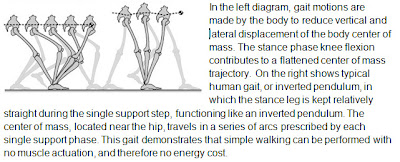Horizontally Dynamic Foot Theory
By Karl Sup and Sharon Day
November 21, 2012
Humans have a vertically dynamic foot for upward lift. In this theory, we propose that Sasquatch have a horizontally dynamic foot for enhanced step grip.
(Undisclosed cave entrance in Arizona)
(Comparing height proportions in relation to ratio of leg length to total height)
Here's a tribe that runs barefoot --
(animation courtesy of MK Davis)
As an update-MK Davis has been running across evidence to point to this concept -
Thank you, MK, for looking for evidence to support our theory.
By Karl Sup and Sharon Day
November 21, 2012
Humans have a vertically dynamic foot for upward lift. In this theory, we propose that Sasquatch have a horizontally dynamic foot for enhanced step grip.
Visual evidence in films such as Bluff Creek Patterson-Gimlin film
(1967), show a creature whose body length is highly disproportionate with human
beings, with powerful gluteus and leg muscles, wide hips, as well as a smooth, compliant
gait that does not generate any head bounce. This evidence demonstrates that
there is no “step off” in their gait, but instead the sasquatch maintain a
knee-bent, ‘snow-shoeing’ compliant gait in which the rear foot and forefoot
exhibit separate flexibility, often referred to as a mid-tarsal flexion break. This
theory proposes that there is an additional shift of the rear foot towards the
forefoot (or an inchworm effect), that can create a composite pinch of
substrate or forest litter like pine needles and leaves.
In the instance of a human who is morbidly obese, his frame and gait
cannot typically tolerate their excess weight. Instead of the typical push off
on the ball of their foot, this individual will sway side to side (“waddle”),
thereby wearing down his knee joints. But, in the instance of a very heavy
creature perfectly designed for such weight, the hips are wider, the joints are
very flexible to allow for a bent-knee, flat-footed gait, which in turn create
enormous gluteus muscles, leg muscles, and a smooth “cross country skier” glide
that is reported by those who have witnessed this gait.
Humans have an Achilles tendon to lever their foot for that push-off
dexterity and it is entirely possible that Sasquatch also possesses a dorsal
tendon on the bottom and side of the foot that allows for flexibility on the
sole of the foot.
There have been reports and video of Sasquatches performing what can
only be called a rabbit run, where he goes down onto all fours, galloping with
his legs up and around rotating like a rabbit’s. This flexibility is highly
impressive, but this run makes a great deal more sense for distance covering
and staying low and less visible. With the enormous amount of lower body muscle
mass that Sasquatch possesses, the launch distance created by going on all four
is an enormous leap, legs rotating to give even more momentum to thrust a long
distance again. It makes sense both for the ability to remain lower and more
hidden, as well as covering ground fast.
Sasquatch is also seen doing a “creeper walk” which is like a squat as
if he is sitting in a chair and creeping his bent legs forward. This not only
makes him much shorter and less noticeable in brush, but gives him a steady, albeit
slow, silent stalking gait.
About the authors of this theory
Karl Sup
is a software architect, developer and analyst, and an avid Bigfoot researcher
working in the mountains of Arizona for many years. During this research, he observed a pattern
in trackways and prints where debris or pine needles were caught in the center crease
of the prints that were “pinched” into place.
Karl’s two children, Jonathan and Kaitlyn, both pre-med majors in
college assisted with details regarding anatomy/physiology and the overall feasibility
of this theory. Karl also has had decades
of audio analysis and editing, and assisted in helping M.K. Davis clean up and
enhance audio from VHS tapes he has been studying and discovered the presence
of infrasound within those recordings.
Sharon Day
is author of Ghost Hunting Theories and a paranormal enthusiast, co-author of
the upcoming book “Paranormal Geeks.” She keeps herself well immersed in all
things Bigfoot and is a medical transcriptionist by trade and from a family of
doctors and nurses. An experience with a ruptured Achilles tendon and its
reattachment had her thinking about Bigfoot’s gait.
(Undisclosed cave entrance in Arizona)
(Comparing height proportions in relation to ratio of leg length to total height)
This is not just a man in a suit – look at the proportions. "Patty's" leg length ratio when compared to her height is 1/3 of her final
height. For humans, it’s more than 2/3rd (see Sharon’s photo on the
left) It’s not only a disproportionately
long body (if Sharon had the same ratio, her final height would be 96 inches instead of 68!), the gluteus muscles on the Bigfoot appear to be about 1/3 of its entire back
height!
Look around the 13 seconds on time period at the foot falls -
(animation courtesy of MK Davis)
As an update-MK Davis has been running across evidence to point to this concept -
Thank you, MK, for looking for evidence to support our theory.











Comments
Post a Comment